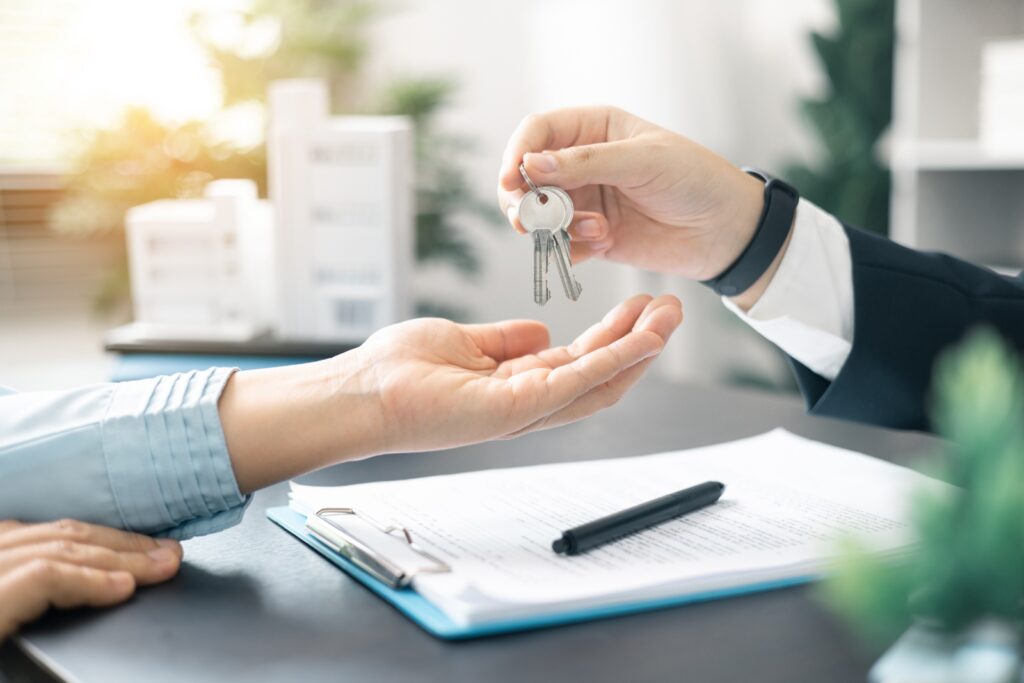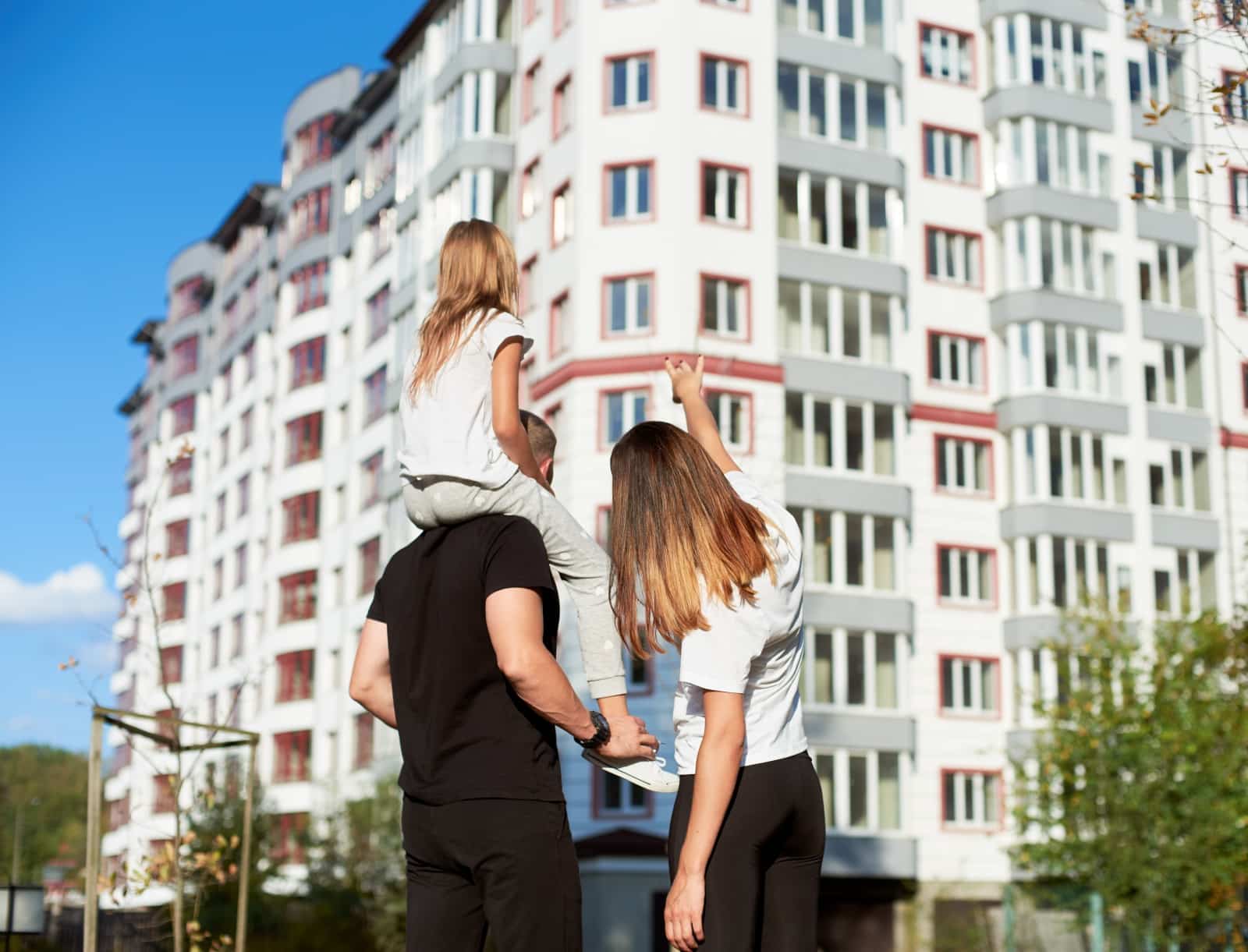Introduction
The apartment rental market in 2025 is more competitive than ever.
Four out of five renters now use search engines to find their next home—making search engine optimization (SEO) not just important, but essential for your property’s success.
But here’s the hard truth: most apartment websites are virtually invisible online. They’re buried beneath competitors, listing sites, and other properties fighting for the same prospects.
The good news? While your competitors fumble with outdated tactics, you have an opportunity to leverage proven SEO strategies that drive qualified traffic directly to your property website.
Today, we’re unpacking exactly how forward-thinking apartment marketers are dominating search rankings and turning digital visibility into actual signed leases.
Table of Contents
- Real Results: How One Luxury Apartment Complex Transformed Their Online Presence
- Understanding the Apartment Seeker’s Digital Journey
- Comprehensive Keyword Strategy for Apartment Marketers
- On-Page SEO Elements That Drive Leasing Results
- Technical SEO: Fix These Issues Today
- Local SEO: The Game-Changer for Occupancy Rates
- Content Marketing That Actually Leases Apartments
- Measuring Success: The SEO Metrics That Actually Matter
- Your 90-Day Apartment SEO Action Plan
- Conclusion
Real Results: How One Luxury Apartment Complex Transformed Its Online Presence
Before diving into strategies, let’s look at what’s actually possible with the right apartment SEO approach.
Green|House Luxury Apartments: From Search Obscurity to Dominating Local Results
Green|House, a luxury apartment complex in Columbus, Ohio, came to OppGen facing a challenge that might sound familiar:
Despite offering residents a modern living experience with top-tier amenities and sustainable living options, their website was practically invisible online. Their occupancy rates were suffering, especially for specific buildings and unit types, while competitors maintained higher occupancy rates.
Like many property managers, they were challenged with increasing local SERP visibility and capturing qualified leads in an increasingly competitive luxury apartment market.
The OppGen Approach That Changed Everything
OppGen and Green|House collaborated to implement a comprehensive local SEO strategy designed to boost the apartment complex’s visibility in key Columbus-area neighborhoods:
- Existing Website Optimization: The team started by optimizing existing website pages for local SEO, ensuring each page was properly structured for search engines while maintaining a premium user experience.
- Targeted Service Page Creation: New neighborhood-specific landing pages were developed to capture local search traffic from prospects researching luxury living options in specific Columbus areas.
- Organic Conversion Rate Optimization: Every page was engineered not just for visibility but for action—turning curious browsers into qualified leads through strategic calls-to-action and user experience improvements.
The approach was meticulously tailored to highlight Green|House’s unique value proposition as a high-end apartment option for individuals and families seeking an eco-friendly, luxurious lifestyle.
The Results
The impact of this strategic approach was immediate and substantial:
- 51.8% increase in organic search traffic within six months
- 440.1% growth in organic search impressions
- 230.7% increase in qualified lead volume
These aren’t just impressive statistics—they represent a transformed pipeline of potential residents for Green|House and a significant return on their marketing investment.
As Marina Gramley, Marketing Manager at Kaufman (Green|House’s management company) explains:
“OppGen has been an excellent partner from the beginning of our relationship, from onboarding to campaign management. They have made strategy recommendations that have far exceeded our expectations. I feel confident that we are receiving a valuable return on ad spend. I always appreciate the team offering solutions when I have questions or run into issues.”
This wasn’t magic—it was methodical SEO tailored specifically to the unique challenges of marketing luxury apartments in a competitive urban market.
Now, let’s break down the exact strategies that can deliver these kinds of results for your property in 2025’s competitive market.
Understanding the Apartment Seeker’s Digital Journey
The Challenge: You’re Missing Crucial Touchpoints
Most apartment marketers make a critical mistake: they focus only on bottom-funnel keywords like “apartments for rent in [city]” and wonder why they can’t break through in search results.
The reality? Your potential tenants start their search long before they type in those direct rental queries.
Google categorizes search behavior into three distinct phases that matter for apartment marketers:
The Three Phases That Matter:
- Do Phase: When someone is ready to take action (e.g., “schedule apartment tour in Miami”)
- Know Phase: When they’re researching and gathering information (e.g., “best neighborhoods in Miami for young professionals”)
- Go Phase: When they want to visit a specific property’s website (e.g., “[Your Property Name] apartments”)
Here’s the problem you’re facing: While you’re fighting with every other property for visibility in the “do” phase, you’re completely missing prospects in the “know” phase—exactly when they’re forming opinions about where they want to live.
Every day, potential residents are making decisions about neighborhoods and properties long before they’re ready to schedule a tour. And in most cases, your property isn’t even part of the conversation.
What You Can Actually Do About It:
1. Map Your SEO Strategy to the Full Renter Journey
Don’t just optimize for direct rental terms. Create content that targets:
- Early Research Phase: Neighborhood guides, cost of living comparisons, relocation information
- Consideration Phase: Floor plan comparison tools, amenity highlights, resident testimonials
- Decision Phase: Virtual tours, specific unit availability, leasing incentives
2. Understand Search Intent Behind Keywords
Different searches require different content approaches:
- Informational Searches: Create comprehensive blog posts and guides
- Navigational Searches: Ensure your branded terms lead directly to relevant pages
- Transactional Searches: Optimize high-converting pages with clear CTAs
3. Segment Your Audience for Targeted Content
Not all apartment seekers are the same. Develop content specifically for:
- Young professionals seeking luxury amenities
- Families prioritizing space and school districts
- Students needing affordable options near campus
- Remote workers requiring home office setups
- Pet owners searching for pet-friendly policies
Your Next Steps:
- Week 1: Complete a Renter Journey Audit — Document every possible touchpoint where prospects might search for information related to your property or location. Identify which phases you’re currently missing in your SEO approach.
- Week 2: Analyze Keyword Intent — Use tools like SEMrush or Ahrefs to categorize your target keywords by search intent (do, know, go). Identify gaps where you lack optimized content for key intent categories.
- Week 3: Create Your Content Roadmap — Develop a plan to create at least one piece of high-value content for each phase of the renter journey, prioritizing areas where competitors have little presence.
By aligning your SEO strategy with the complete renter journey, you’ll create multiple opportunities to connect with prospects before your competition even enters the picture.
Comprehensive Keyword Strategy for Apartment Marketers
The Challenge: Your Keyword Approach Is Too Generic
Let’s be blunt: if your keyword strategy revolves solely around terms like “apartments in [city]” or “luxury apartments,” you’re fighting an impossible battle against established listing sites and larger competitors.
The harsh reality is that these high-volume, generic keywords are:
- Extremely competitive
- Dominated by listing giants like Apartments.com and Zillow
- Likely to attract unqualified traffic
- Prohibitively expensive to rank for in competitive markets
What if instead of fighting this uphill battle, you could identify and target the specific search terms your ideal residents are actually using—terms your competitors have completely overlooked?
The Real Problem You’re Facing:
- You’re targeting the same obvious keywords as everyone else, leading to low rankings and insignificant traffic
- Your content doesn’t match the specific language your ideal residents use when searching for apartments
- You’re missing long-tail keyword opportunities that have higher intent and conversion potential
- Your keyword strategy isn’t localized enough to capture neighborhood-specific searches
- You’re not optimizing for voice search patterns that increasingly drive apartment hunting behavior
What You Can Actually Do About It:
1. Implement a Three-Tiered Keyword Research Approach
Structure your keyword strategy into three distinct categories:
- Branded Terms: Your property name, variations, and misspellings
- Location-Based Terms: Neighborhood-specific phrases and hyperlocal modifiers
- Amenity-Focused Terms: Specific features that differentiate your property
2. Prioritize the Long-Tail Keywords With Clear Intent
Focus on longer, more specific phrases that indicate high intent:
- “Pet-friendly 2-bedroom apartments in [neighborhood]”
- “Luxury apartments with rooftop pool in downtown [city]”
- “Apartments near [major employer/university] with in-unit laundry”
- “Short-term lease apartments in [neighborhood] with parking”
These longer phrases typically have:
- Lower competition
- Higher conversion rates
- More qualified traffic
- Clearer searcher intent
3. Target Neighborhood-Specific Terms
Create hyperlocal content optimized for:
- “Living in [neighborhood name]” searches
- “Apartments near [local landmark/attraction]”
- “[Neighborhood] vs [neighborhood] living comparison”
- “Best restaurants/coffee shops/parks near [neighborhood]”
4. Leverage Competitor Keyword Gap Analysis
Uncover valuable keywords your competitors are ranking for:
- Identify terms where competitors have page 1 rankings
- Find “content gaps” where no apartment websites have strong content
- Discover which amenity terms drive traffic to competitor sites
- Analyze which local terms have the highest click-through rates
Your Next Steps: 30-Day Keyword Foundation Plan
- Week 1: Conduct a Keyword Discovery Session — Use tools like SEMrush, Ahrefs, or Google Keyword Planner to identify at least 100 potential keywords related to your property. Sort them by search volume, competition, and relevance.
- Week 2: Perform Competitor Gap Analysis — Analyze the top 3-5 competing properties in your market. Identify keywords they rank for that you don’t, and determine which ones align with your property’s unique selling points.
- Week 3: Create Your Keyword Priority Map — Group keywords by theme and intent, then prioritize them based on:
- Alignment with your target resident personas
- Current ranking position
- Competition level
- Conversion potential
- Week 4: Update Your Content Calendar — Plan specific content pieces that target your highest-priority keyword groups. Assign deadlines and responsibilities for creating this optimized content.
Remember that keyword research isn’t a one-time task. The most successful apartment marketers continuously refine their keyword strategy based on performance data, emerging search trends, and changes in their local market.
At OppGen, we typically see a 35-45% increase in relevant organic traffic within 90 days when implementing a localized, long-tail keyword strategy for apartment clients.
On-Page SEO Elements That Drive Leasing Results
The Challenge: Your Pages Aren’t Optimized for Conversions
Having your website appear in search results is only half the battle. The real challenge is turning those visitors into actual leads and leases.
Most apartment websites suffer from critical on-page SEO problems that kill their conversion potential:
- Generic, templated content that doesn’t differentiate properties
- Poorly structured pages that frustrate users looking for specific information
- Missing or incomplete schema markup that limits rich snippet opportunities
- Weak calls-to-action that fail to capture leads at peak interest moments
Let’s be clear: ranking well but failing to convert that traffic is just burning money.
The Real Problem You’re Facing:
- Your page titles and meta descriptions aren’t compelling enough to stand out in crowded search results
- Your headings don’t match search intent or include target keywords
- Your content is too generic and doesn’t address specific renter questions
- You’re not using structured data to enhance your search listings
- Your internal linking structure isn’t guiding visitors toward high-conversion pages
- Your pages load too slowly, causing potential residents to abandon your site
What You Can Actually Do About It:
1. Optimize These Critical Pages First
Focus your initial on-page optimization efforts on these high-impact pages:
- Homepage: Clearly communicate your property’s unique value proposition and location
- Floor Plan Pages: Create individual, optimized pages for each floor plan type
- Amenities Page: Highlight unique features with dedicated sections and rich media
- Neighborhood Page: Showcase local attractions, employers, and lifestyle benefits
- Contact/Tour Request Page: Remove friction from the lead generation process
2. Implement These On-Page SEO Practices
For each priority page, ensure you’ve optimized:
- Title Tags: Include your primary keyword and location within the first 50-60 characters
- Meta Descriptions: Write compelling 150-160 character summaries that drive clicks
- Heading Structure: Use a logical H1→H6 hierarchy with keywords in key headings
- Internal Links: Link to other relevant pages using descriptive anchor text
- Image Optimization: Add descriptive filenames and alt text to all property images
- Structured Data: Implement ApartmentComplex, LocalBusiness, and FAQPage schema
3. Create Conversion-Focused Content
Transform generic apartment descriptions into content that converts:
- Address Specific Pain Points: Directly answer common objections about price, location, or amenities
- Use Benefit-Driven Language: Focus on how features improve residents’ lives, not just listing amenities
- Include Social Proof: Add resident testimonials and reviews strategically throughout your content
- Create Urgency: Highlight limited availability for popular floor plans
- Add Multiple CTAs: Place strategic calls-to-action at different points on each page
4. Optimize for Featured Snippets
Structure content to win position zero for key informational queries:
- Create FAQ Sections: Use question-based headings with concise answers
- Use Bullet Points and Lists: Format content for easy snippet extraction
- Add Tables for Comparison Data: Present floor plan or pricing information in table format
- Answer “How” and “What” Questions: Create content specifically addressing common renter questions
Your Next Steps: 60-Day On-Page Optimization Plan
- Week 1-2: Conduct a Full On-Page Audit — Evaluate each key page against best practices. Document all issues related to titles, descriptions, headings, content quality, and structured data.
- Week 3-4: Optimize Your Money Pages — Start with your highest-traffic and highest-conversion-potential pages. Update titles, headings, and content to better match search intent and drive action.
- Week 5-6: Implement Schema Markup — Add appropriate structured data to your key pages, focusing on ApartmentComplex, LocalBusiness, and FAQ schema types.
- Week 7-8: Create Your Content Enhancement Plan — Identify pages with thin or generic content. Develop a plan to expand and enhance this content with specific, valuable information that addresses renter questions and objections.
These on-page optimizations don’t just improve your rankings—they significantly increase the likelihood that searchers will click on your listings and convert once they arrive on your site.
Our apartment clients typically see a 20-30% increase in search click-through rates and a 15-25% improvement in on-site conversion rates after implementing these focused on-page optimizations.
Technical SEO: Fix These Issues Today
The Challenge: Hidden Technical Problems Are Killing Your Rankings
You could have the most compelling apartment listings and the best content in your market, but if search engines can’t properly access, understand, and index your site, none of that matters.
Technical SEO issues are often invisible to the average user but can devastate your search performance. They’re the silent killers of otherwise promising apartment marketing strategies.
The Real Problem You’re Facing:
- Your site loads too slowly, causing both users and search engines to abandon it
- Your mobile experience is frustrating, despite most apartment searches happening on phones
- Your URL structure is confusing to both users and search engines
- Duplicate content across similar floor plan pages is diluting your ranking potential
- Core Web Vitals issues are negatively impacting your search visibility
- Crawl errors and broken links are wasting your crawl budget
- Poor site architecture makes it difficult for search engines to discover all your content
These technical issues aren’t just minor inconveniences—they’re actively preventing your property from reaching qualified prospects.
What You Can Actually Do About It:
1. Prioritize These Technical Fixes First
Address these high-impact technical issues immediately:
- Site Speed Optimization: Compress images, leverage browser caching, and minimize HTTP requests
- Mobile Responsiveness: Ensure your site functions flawlessly on all screen sizes
- Secure Your Site: Implement HTTPS across all pages
- Fix Broken Links and 404 Errors: Use Google Search Console to identify and resolve crawl errors
- Create an XML Sitemap: Submit an updated sitemap to Google Search Console
2. Implement Advanced Technical Optimizations
Once the basics are solid, move to these more advanced technical improvements:
- Core Web Vitals Optimization: Address Largest Contentful Paint, First Input Delay, and Cumulative Layout Shift issues
- Structured Data Implementation: Add appropriate schema markup for apartments, prices, and availability
- Canonical Tags: Use canonical URLs to prevent duplicate content issues across similar unit pages
- Hreflang Tags: Implement for multilingual apartment sites targeting diverse populations
- Optimize Internal Link Structure: Create a logical hierarchy that guides both users and search engines
3. Improve Your Site Architecture
Structure your site to maximize crawlability and user experience:
- Implement a Logical Folder Structure: Create intuitive URL paths (e.g., /floor-plans/2-bedroom/deluxe)
- Limit Click Depth: Ensure important pages are no more than 3 clicks from the homepage
- Create Hub Pages: Develop central resource pages that link to related content (e.g., a main amenities page linking to specific amenity details)
- Use Breadcrumb Navigation: Help users and search engines understand their location within your site hierarchy
- Optimize Pagination: Properly implement rel=”next” and rel=”prev” for multi-page sections
Your Next Steps: 45-Day Technical SEO Cleanup Plan
- Week 1: Run a Comprehensive Technical Audit — Use tools like Screaming Frog, Semrush, or Ahrefs to identify all technical issues affecting your site. Prioritize issues based on severity and impact on rankings.
- Week 2-3: Address Critical Speed Issues — Optimize image sizes, implement browser caching, minify CSS/JavaScript, and consider a content delivery network (CDN) if appropriate.
- Week 4-5: Fix Structural Problems — Resolve duplicate content issues, implement proper canonical tags, fix broken links, and improve internal linking structure.
- Week 6: Implement Schema Markup — Add appropriate structured data, focusing on ApartmentComplex, LocalBusiness, and FAQPage schemas.
- Track these key metrics: Page load time, mobile usability score, Core Web Vitals measurements, and crawl stats in Google Search Console.
Technical SEO might seem less exciting than creating compelling content, but it’s the foundation that makes everything else possible. When technical issues go unaddressed, they create an invisible ceiling on your ranking potential.
Our apartment clients typically see a 25-40% improvement in overall organic visibility within 60-90 days after resolving critical technical SEO issues.
Local SEO: The Game-Changer for Occupancy Rates
The Challenge: You’re Invisible in Local Searches
When potential residents search for apartments in your area, are you showing up in the local pack? Are you appearing on the map? For most property managers, the answer is no—and it’s costing them qualified leads every single day.
Local SEO is particularly crucial for apartments because proximity is a primary factor in housing decisions. If you’re not optimized for local search, you’re essentially invisible to your target market.
The Real Problem You’re Facing:
- Your Google Business Profile is incomplete or poorly optimized, limiting your local visibility
- You have inconsistent NAP (Name, Address, Phone) information across the web
- You’re not appearing in the local 3-pack for relevant apartment searches
- You have few or poor-quality reviews compared to competitors
- Your local citation profile is weak or inconsistent
- Your website lacks neighborhood-specific content that would help you rank for local terms
These local SEO shortcomings aren’t just technical issues—they’re directly impacting your occupancy rates by making your property difficult to find online.
What You Can Actually Do About It:
1. Optimize Your Google Business Profile
Your GBP is the cornerstone of local apartment SEO:
- Claim and Verify Your Listing: Ensure you have full control of your property’s GBP
- Select the Correct Primary Category: Use “Apartment Complex” or “Apartment Building”
- Add Complete Contact Information: Include your accurate address, phone number, and website URL
- Set Accurate Business Hours: Include office hours and any special leasing hours
- Add High-Quality Photos: Upload professional images of your property, amenities, and units
- Create Google Posts Regularly: Share updates about availability, promotions, or events
- Answer Q&A Proactively: Monitor and respond to questions asked through your GBP
2. Build and Manage Local Citations
Consistent business information across the web strengthens your local SEO:
- Audit Your Current Citations: Identify where your NAP information appears online and ensure consistency
- Create Listings on Apartment Directories: Establish profiles on Apartments.com, Rent.com, ApartmentFinder, and similar sites
- Develop Local Business Listings: Add your property to general directories like Yelp, Yellow Pages, and BBB
- Maintain Consistent Information: Use identical NAP information across all listings
- Add Enhanced Content: Include photos, virtual tours, and amenity details where platforms allow
3. Implement a Review Generation and Management Strategy
Reviews significantly impact both your local rankings and prospect decision-making:
- Create a Systematic Approach to Requesting Reviews: Ask satisfied residents to share their experiences at key moments (move-in, renewal, positive maintenance experiences)
- Respond to All Reviews: Address both positive and negative feedback professionally
- Showcase Reviews on Your Website: Feature excerpts from your best reviews on relevant pages
- Monitor Review Platforms Daily: Set up alerts for new reviews across all platforms
- Address Issues Mentioned in Negative Reviews: Show prospects you’re responsive to resident concerns
4. Create Hyperlocal Content
Develop neighborhood-specific content that attracts local searchers:
- Neighborhood Guides: Create detailed pages about the area surrounding your property
- Local Amenity Maps: Develop interactive maps showing nearby restaurants, parks, and services
- Public Transportation Information: Provide details about commuting options and proximity to transit
- School District Information: Highlight local schools and educational resources
- Local Events Calendars: Maintain information about community happenings and activities
Your Next Steps: 60-Day Local SEO Dominance Plan
- Week 1-2: Audit and Optimize Your Google Business Profile — Ensure all information is accurate, complete, and compelling. Add at least 10 new high-quality photos and create an initial Google Post.
- Week 3-4: Complete a Citation Audit and Cleanup — Identify all existing citations and correct any inconsistencies. Create listings on any missing high-priority directories.
- Week 5-6: Implement a Review Generation System — Develop a process for consistently requesting reviews from satisfied residents. Create templates for responding to both positive and negative reviews.
- Week 7-8: Develop Your First Hyperlocal Content Piece — Create a comprehensive neighborhood guide highlighting the benefits of living in your specific location. Optimize it for local search terms.
- Track these key metrics: Local pack appearances, GBP views and actions, review quantity and quality, and rankings for neighborhood-specific keywords.
Local SEO isn’t just another marketing tactic for apartment communities—it’s absolutely essential for connecting with prospects who are specifically looking for housing in your area.
Our apartment clients typically see a 30-50% increase in qualified leads from local searches within 90 days of implementing these local SEO strategies.
Content Marketing That Actually Leases Apartments
The Challenge: Your Content Doesn’t Connect With Real Renters
Most apartment websites feature the same generic content: basic amenity lists, floor plan dimensions, and cookie-cutter neighborhood descriptions copied from other properties.
This approach fails to address the real questions, concerns, and desires that drive apartment hunting decisions—and it does nothing to differentiate your property in search results.
The Real Problem You’re Facing:
- Your content talks about features instead of benefits, failing to connect emotionally with prospects
- You’re not addressing the specific questions potential residents are asking Google
- Your content is too generic and doesn’t showcase what makes your property and location unique
- You lack the content types that attract links and social shares, limiting your domain authority
- Your visual content isn’t properly optimized for both user engagement and search visibility
These content shortcomings aren’t just missed opportunities—they’re actively pushing prospects toward competitors who better address their questions and concerns.
What You Can Actually Do About It:
1. Create Content for Each Stage of the Renter Journey
Develop tailored content for prospects at different stages:
- Awareness Stage: Neighborhood guides, cost of living comparisons, relocation information
- Consideration Stage: Virtual tours, amenity spotlights, resident testimonials
- Decision Stage: Floor plan comparison tools, move-in specials, application guides
2. Develop These High-Value Content Types
Focus on content formats proven to drive engagement and conversions:
- Comprehensive Neighborhood Guides: Detailed information about local dining, shopping, recreation, and services
- Day-in-the-Life Content: Show what living in your community is actually like through resident perspectives
- FAQ Resources: Address common questions about lease terms, pet policies, utilities, and application requirements
- Comparison Content: Create honest comparisons of different neighborhoods or housing options
- Video Tours and Walkthroughs: Showcase units, amenities, and the surrounding area
3. Optimize Visual Content for Maximum Impact
Transform your property imagery from basic photos to conversion tools:
- Use High-Quality, Professional Photography: Invest in professional photos that showcase your property at its best
- Add Virtual Tours: Implement 3D tours that allow prospects to explore units remotely
- Create Floor Plan Visualizations: Offer interactive floor plans with furniture placement tools
- Develop Amenity Videos: Create short video spotlights of key amenities and common areas
- Optimize All Visual Assets: Add descriptive filenames, alt text, and captions to improve SEO and accessibility
4. Implement a Strategic Blogging Plan
Develop a blog that addresses renter concerns while building your authority:
- Post Consistently: Maintain a regular publishing schedule (at least 2-4 times monthly)
- Focus on Local Topics: Create content about neighborhood developments, local events, and area attractions
- Address Common Pain Points: Write about apartment hunting challenges, moving tips, and lease understanding
- Showcase Lifestyle Content: Feature posts about apartment decorating, entertaining, and making the most of amenities
- Include Expert Insights: Share property management perspectives on rental trends and market conditions
Your Next Steps: 90-Day Content Development Plan
- Week 1-3: Complete a Content Audit and Gap Analysis — Evaluate your existing content against competitors and identify priority gaps to fill. Document the questions prospects regularly ask your leasing team.
- Week 4-6: Develop Your Content Calendar — Create a 90-day publishing schedule prioritizing high-impact content types. Assign responsibilities for content creation, review, and publication.
- Week 7-9: Create Your Flagship Content Piece — Develop one comprehensive, authoritative piece of content (e.g., a neighborhood guide or amenity showcase) that demonstrates your local expertise.
- Week 10-12: Implement a Content Promotion Strategy — Develop a plan for promoting each content piece through email, social media, and local partnerships to maximize visibility and engagement.
- Track these key metrics: Content engagement (time on page, scroll depth), lead generation from content pages, social shares, and rankings for targeted keywords.
Strategic content marketing doesn’t just improve your search visibility—it fundamentally changes how prospects perceive your property before they ever visit in person.
Our apartment clients typically see a 35-45% increase in qualified lead generation within 90 days of implementing a targeted content marketing strategy.
Measuring Success: The SEO Metrics That Actually Matter
The Challenge: You’re Tracking the Wrong Metrics
Many property managers make a critical mistake: they focus on vanity metrics like total traffic or keyword rankings without connecting these numbers to actual leasing results.
This disconnected approach leads to wasted marketing dollars and frustrated teams who can’t demonstrate real ROI from their SEO efforts.
The Real Problem You’re Facing:
- You’re measuring generic traffic numbers instead of qualified visitors
- You’re not connecting online activities to actual tours and leases
- You lack visibility into which keywords actually drive conversions
- You can’t accurately attribute leases to specific marketing channels
- You don’t have clear benchmarks for evaluating SEO performance
Without proper measurement, you’re essentially operating your digital marketing in the dark—unable to identify what’s working and what needs improvement.
What You Can Actually Do About It:
1. Focus on These Performance Metrics
Prioritize measurements that connect directly to business outcomes:
- Conversion Rate by Traffic Source: Track how organic visitors convert compared to other channels
- Lead-to-Tour Conversion Rate: Measure how many online leads actually schedule property tours
- Cost Per Lease from SEO: Calculate your true acquisition cost from organic search
- Organic Traffic by Unit Type: Monitor which floor plans attract the most search traffic
- Local Pack Appearances: Track visibility in Google’s local results for key search terms
- Featured Snippet Captures: Monitor how often your content appears in position zero
- Search Visibility Score: Measure your overall presence for target keywords compared to competitors
2. Implement Proper Tracking Systems
Ensure you have the right technical foundation for accurate measurement:
- Google Analytics 4 Setup: Configure GA4 with proper event tracking and conversion goals
- Google Search Console Integration: Connect GSC with Analytics for comprehensive search data
- Call Tracking Implementation: Use dynamic phone numbers to attribute calls to specific sources
- Form Tracking: Implement event tracking on all lead capture forms
- Tour Scheduling Attribution: Track the source of all tour requests
- CRM Integration: Connect online activities to actual leasing outcomes
3. Create Custom Dashboards for Key Stakeholders
Develop tailored reporting for different team members:
- Property Manager Dashboard: Focus on occupancy impact and lead quality metrics
- Marketing Team Dashboard: Highlight channel performance and content engagement
- Executive Dashboard: Emphasize ROI and competitive positioning
- Leasing Team Dashboard: Showcase lead volume, quality, and conversion metrics
4. Conduct Regular Performance Reviews
Establish a consistent schedule for data analysis and optimization:
- Weekly Performance Check-ins: Review key metrics and identify immediate opportunities
- Monthly In-Depth Analysis: Conduct comprehensive performance reviews and make tactical adjustments
- Quarterly Strategy Evaluations: Assess overall SEO strategy effectiveness and make larger directional changes
- Annual Competitive Analysis: Benchmark your performance against key competitors and industry standards
Your Next Steps: 30-Day Measurement Framework Implementation
- Week 1: Audit Your Current Analytics Setup — Evaluate your existing tracking and identify gaps in your measurement process. Ensure proper goal configuration in Google Analytics.
- Week 2: Implement Enhanced Tracking — Set up event tracking for key user actions, configure proper UTM parameters, and ensure accurate attribution across channels.
- Week 3: Build Your Core Dashboards — Create custom reports and dashboards that align with your specific business objectives and stakeholder needs.
- Week 4: Establish Your Review Process — Schedule regular performance reviews with clear responsibilities for data analysis, insight generation, and action planning.
- Track these implementation metrics: Data accuracy (test against known actions), dashboard adoption by team members, and insight-to-action conversion rate.
Proper measurement isn’t just about collecting data—it’s about transforming that data into actionable insights that drive real business results.
Our apartment clients typically see a 20-30% improvement in marketing efficiency within 60 days of implementing robust measurement frameworks, simply by redirecting resources from underperforming tactics to proven winners.
Your 90-Day Apartment SEO Action Plan
Now that we’ve covered the key strategies for apartment SEO success, let’s put it all together in a practical, step-by-step implementation plan.
This 90-day roadmap provides a structured approach to transforming your property’s search visibility and driving measurable results.
Month 1: Foundation Building
Week 1-2: Comprehensive Audit & Strategy Development
- Complete technical SEO audit to identify critical issues
- Conduct keyword research focused on location and amenity terms
- Analyze competitor strategies and identify opportunity gaps
- Develop your custom SEO roadmap with clear priorities
Week 3-4: Technical Foundation & Local SEO Setup
- Fix critical technical issues (site speed, mobile responsiveness, crawlability)
- Optimize Google Business Profile with complete information and photos
- Begin citation building and cleanup process
- Implement basic schema markup for apartment properties
Month 2: Content Development & On-Page Optimization
Week 5-6: Priority Page Optimization
- Optimize homepage, floor plan pages, and amenity pages
- Create or enhance neighborhood/location pages
- Improve title tags, meta descriptions, and heading structures
- Implement conversion-focused calls-to-action
Week 7-8: Content Development Kickoff
- Create your flagship neighborhood guide or lifestyle content
- Develop FAQ content addressing common prospect questions
- Begin publishing regular blog content (aim for 1-2 posts weekly)
- Add testimonials and social proof throughout your website
Month 3: Promotion, Measurement & Optimization
Week 9-10: Off-Page SEO Implementation
- Begin targeted outreach to local publications and websites
- Launch review generation campaign with current satisfied residents
- Create social media sharing strategy for your content
- Implement link-worthy assets (neighborhood guides, market reports)
Week 11-12: Measurement Framework & First Optimizations
- Finalize analytics dashboards and reporting structure
- Conduct first comprehensive performance review
- Make data-driven adjustments to underperforming content
- Develop your long-term content calendar based on initial results
Expected Outcomes After 90 Days:
With consistent implementation of this plan, you should expect to see:
- 30-50% increase in organic search traffic from qualified leads
- Improved rankings for neighborhood and amenity-specific keywords
- Higher conversion rates from organic search visitors
- Increased visibility in local pack results
- Growing review profile with higher average ratings
- Stronger competitive positioning against other properties
Remember that SEO is not a one-time project but an ongoing process of optimization. The foundation you build in these first 90 days will set the stage for continued growth and success.
Conclusion: Turning SEO Success Into Leasing Success

The apartment rental landscape in 2025 is more competitive than ever, but the strategies we’ve outlined provide a clear path to differentiating your property and connecting with qualified prospects through search.
By implementing a comprehensive SEO strategy that addresses technical foundations, local visibility, content development, and proper measurement, you can transform your property’s online presence and drive measurable improvements in occupancy rates.
Remember these key principles as you move forward:
- Focus on the full renter journey, not just direct rental searches
- Prioritize hyperlocal content that showcases your neighborhood expertise
- Fix technical issues that may be holding back your search performance
- Leverage your Google Business Profile as a critical leasing tool
- Create content that answers real renter questions, not just generic property information
- Measure what matters by connecting SEO metrics to actual leasing outcomes
The most successful property managers understand that effective SEO isn’t just about rankings—it’s about creating multiple digital touchpoints that guide prospective residents from initial awareness to signed leases.
Take SEO for Your Apartment Community to the Next Level
Ready to transform your property’s digital presence and drive more qualified leads? At OppGen, we specialize in creating tailored SEO strategies for luxury apartments and multifamily communities.
Our proven approach has helped properties like Green|House achieve remarkable results:
- 51.8% increase in organic search traffic
- 440.1% growth in organic search impressions
- 230.7% increase in qualified lead volume
These results demonstrate what’s possible when you partner with marketing experts who understand the unique challenges of apartment marketing. Your property deserves nothing less than exceptional marketing that matches its exceptional quality.
Contact OppGen today to discover how we can elevate your apartment’s SEO strategy and drive exceptional leasing results for your property.








